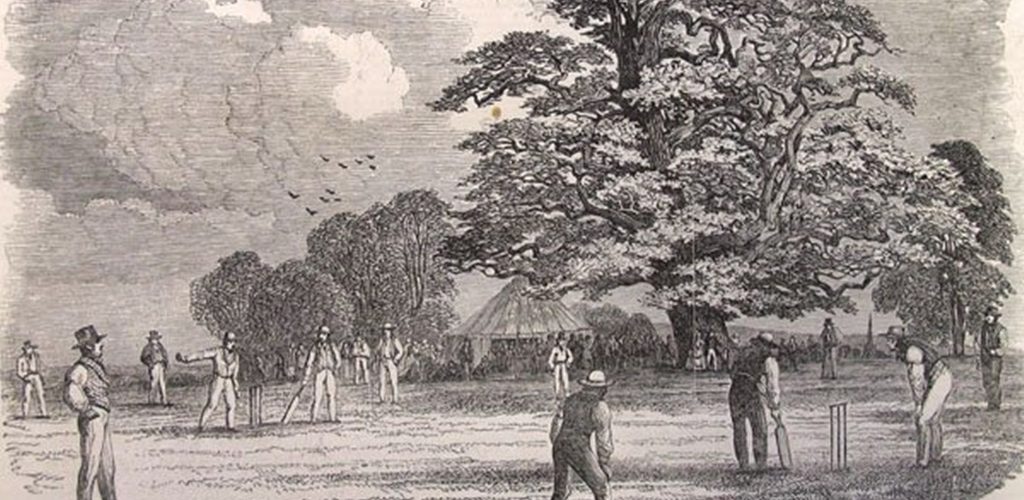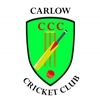
'Origins of Cricket in Carlow' | By N.D. McMillan
THE earliest cricket was played against wicket gates in the middle ages by peasants. We learn from the M.C.C. film Cricket in Ireland that it was imported into this country by Anglo-Irish landlords and it flourished especially during the Commonwealth period when Royalists were confined to their estates and were faced with the threat of expropriation. The ascendancy which appeared in the 18th century was made up of an amalgam of this Royalist vanguard, Cromwellian adventurers and a new bourgeoisie who were involved in such things as mining, which was particularly important in the Carlow region.
Ireland’s (Royal) Dublin Society was established by the best elements of this* ascendancy in 1731, in the same year as Slindon cricket club was founded on the Sussex Downs, the oldest surviving club. The most famous of all the early English village clubs was Hambledon in Hampshire, a club which has celebrated its bi-centenary.
This perspective, places the first formal game of cricket in Ireland in the Phoenix Park in August 1792 between the Garrison and All Ireland in an historical context. According to W.P. Hone in his Cricket in Ireland (Kerryman, 1955) the military contained in its defeated ranks Arthur Wesley (Hon. A. Wesby on score sheet), the self same Duke of Wellington who boasted that the Battle of Waterloo was won from the playing fields of Eton.
It is generally agreed that the game in Carlow owes its existence to an individual enthusiast Col. Horace Rochfort from the leisured class born in 1809 who, however, probably was only a spectator at the first game in Carlow, which according to Thomas O’Brien in his County Carlow Football Club 1873-1977 Rugby History was in 1823 against Avondale*.
*John Henry Parnell who introduced cricket into County Wicklow at Avondale and Lawrence gives an account of Carlow men setting out from Clogrennane to drive by coach the thirty odd miles to Avondale “in time for a good breakfast and the day’s business began”. The Parnells were big landowners in County Carlow with many relatives in Carlow and Laois.
In a fascinating piece of oral history, Pat Purcell, now in his 87th year, has explained the history of the Rochfort family. In the building of the barracks in 1751 a hierarchy of workmen were employed with masons, cutters, cleavers, breakers and spallers. The Rochfort family came from England and lived in a thatched cottage near the quarry at Clogrennane. The father and his young son were seen by a rich English lady sitting on a pile of the small stones they, as spallers, were employed to produce, and she decided in true Shavian fashion to transform the life of the youngster by giving him an education. The able young Rochfort took full advantage of this opportunity and was sent to Oxford.
While lodging in the London region the young dandy impressed a lady nursing her father who was in extremely bad health, by passing her house and throwing away a purple silk handkerchief and thereby giving the impression of great wealth. She was impressed by his appearance and managed through the family steward to gain an introduction to the young man. The romance matured until the point where the lad sought the lady’s hand, but the father was not going to risk giving his daughter to an adventurer and sent the steward to Ireland to check up on the Rochfort’s credentials.
Apparently, the youngster on stepping off the boat which had carried the pair down the river Barrow from Kingstown, admitted that he was penniless. He was not however witless and promised the steward that if he returned a good report on his family he would in due course make the steward a rich man. Purcell tells us that they met two goats butting each other outside the cottage and found the father sitting on a stone peeling a potato with his fingers. The steward stayed in Carlow at Ogle’s Hotel for a respectable period and then returned to London. He duly informed the dying father that when he arrived at Rochfort’s, he was met by two hall butts (the -goats), and this was proceeded by partaking of-food with noglets (cutlery) which surpassed anything he had ever seen (the fingers used by the older Rochfort) and that he would be a wise man if he was to agree to the marriage.
The marriage secured a fortune for the young man and after the death of the father the steward became a rich man when the estate was sold and Rochfort purchased 14,000 acres from the Marquess of Ormonde at Clogrennane and began building a house there in 1754. This house had fifty two rooms and three hundred and sixty five windows following a popular fashion of the time, but the older Rochfort died in 1756 and never saw this completed as it took seven years.
The rise of Protestant parliamentary nationalism in the late 18th century was part of an international revolutionary advance and was accompanied by the more thorough going democratic movement which was especially strong in the South East of Ireland. In Carlow the development of industry had produced a strong base for the United Irishmen, which was a mortal threat to adventurers such as Rochfort and Henry Bruen, who lived on his massive estate at Oakpark, Carlow. Rochfort senior had become notorious after 1798 being the magistrate who travelled in his carriage between Carlow, where the large number of prisoners were held in what is today Gillespies corn store, and Leighlinbridge, where another group were held in the castle. After the execution of the “croppy boys” who are buried in a mass grave in Graiguecullen and the piking of their colleagues in Leighlinbridge, the remaining prisoners were terrified by Rochfort who picked out two of their number each day and hauled them up with the noose on the back of his aid “the walking gallows” Whelan, who stood six foot five inches. Due to the odium he incurred, Whelan shortly thereafter drowned himself in the Barrow.
These reprisals were part of a policy of terror used by the Carlow landlords who were badly shaken by the attempted revolution which had seen the defeat of part of the locally barracked Ancient Britain Regiment, who were annihilated at Carnew and the involvement even of trusted men such as the executed Phil Kennedy, who had been estate manager at Castletown House. A postscript to this family history was that Pat Purcell as a young man in the Irish Republican Army on the 2nd November 1922 with a few colleagues, roped the son of the founder of the cricket club, also Horace Rochfort, on his way back from the cricket and rugby club house, now the St. Bridgid’s Hospital, and on a freezing cold night towed him up and down the Barrow for a few minutes before returning him to the seat of his carriage driven by Paddy Buggy.
The next morning Rochfort travelled to Carlow and put his estate up for sale and this was purchased by John Heron of Waterford who cut down the trees in the wooded estate for use in his building business and then sold the estate to another builder from Cork, a certain Murphy who used the slates of the house for a church at Carndonagh, County Donegal.
It is quite clear that “modern” sport was introduced by the leisured class and that they made them exclusive to their own social, racial and sexual group. In Britain in the post Napoleonic period Wellington as part of a national policy introduced and encouraged cricket, perhaps because as an Irishman he saw its utility. Certainly the Sentinel was very conscious of the threat posed by the reform movement of Catholic Emancipation as in the 1820’s and indeed all the papers of County Carlow were filled with reports on Daniel O’Connell. Cricket and military “intelligence'” of Carlow both become more frequent in this period and although not directly connected the link is there.
However, sport was generally reviving amongst the populace as we know that John Tyndall, the famous scientist who was a boy at this time in Leighlin region, was “an expert hockey player”. In fact he probably played hurling not hockey, as the games had not been differentiated one from the other at the time. He was the son of a poor man who supplemented his meagre Irish Constabulary income by boot-making and played local games.-One finds no mention whatever in Carlow papers of sport either amongst the ascendancy or the locals in this period, but we know from The Phoenix Club, 1830-1980 that there was a big involvement of Carlow landlords in the establishment of Phoenix Cricket Club in 1830. In these early years the Carlow season always began with two games against the Dublin club.
McDowell and Webb in their classic study Trinity College Dublin 1592-1952 (Cambridge 1982) make an interesting comment about the relationship between the effects of the Act of Union the intellectual decline of the country and the rise of sport when they wrote,
“The decline spread quickly from Dublin throughout the country, and soon after 1800 the Irish landlord was transformed with remarkable suddenness from a cultured, if somewhat provincial gentleman to a philistine whose only interests were soldiering and sport”.
[/mpc_textblock]
